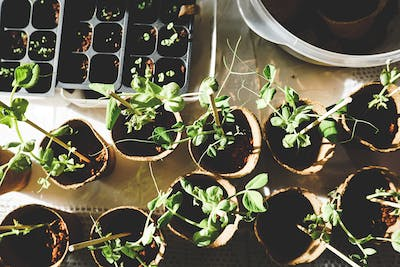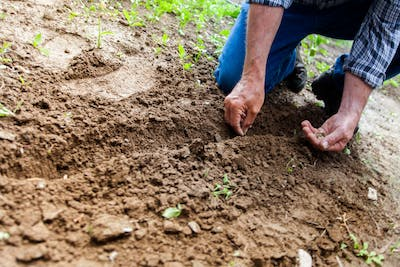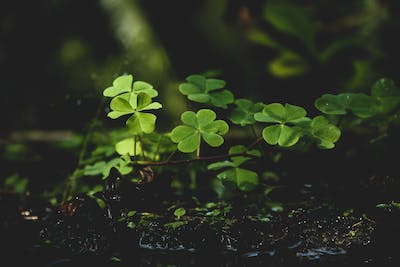
There are many types of soils, each with its benefits for growing plants. The best soil for growing plants is the one that is the best fit for your specific climate and soil type. This ultimate soil guide will help you choose the right one for your garden.
Types Of Soils And What Plant Is Best To Use Them
Here is the type of soil and the best time to use them.
Loamy Soil
First on the list is the loamy soil. Loamy soil is a type of soil typically found in regions with high moisture content. This means it can hold water and give plants the necessary nutrients to grow.
This type of soil is perfect for growing plants that require a lot of moisture, such as tomatoes, peppers, flowers, and trees. Also, loamy soils are often very fertile, producing a high crop yield.
This soil type is the best for growing plants because it has good drainage and a mix of different rocks. It also has a high level of organic matter, making it healthy for plants.
What to grow in a loamy soil
- Climbers, perennials, shrubs, tubers like wisteria, dog’s-tooth violets, rubus, and delphinium.
- Loamy soil is one of the most prolific soil types. Thus, most vegetable and berry crops will thrive on it.

Silt Soil
Silt soil is best for growing plants because it is a great mixture of sand and clay. Combining these two materials helps form an ideal soil for your plants to grow in. The sand material consists of small pieces that are very small compared to the clay. This makes it easy for the plant to assimilate nutrients and water evenly, which leads to better growth and healthy plants.
What to grow in silty soil
- Like Mahonia and New Zealand flax, plants that thrive in silty soil include shrubs, climbers, grasses, and perennials.
- Silty soils are ideal for moisture-loving trees like cypress, dogwood, willow, and birch.
- Silty soils with sufficient drainage are ideal for growing most vegetable and fruit crops.
Sandy Soil
Sandy soil is good for growing plants because it has a lot of organic matter. This means that the soil will help to maintain your plants’ growth and health. Additionally, sandy soil is easy to work with, so you can quickly get a good yield from your plants.
What to grow in sandy soil
- Shrubs and bulbs, including tulips, hibiscus, tree mallow, and sun roses, prefer sandier soils.
- Potatoes, parsnips, and other root crops prefer sandy soils.
- Commercial crops planted on sandy soils include lettuce, strawberries, peppers, corn, squash, zucchini, collard greens, and tomatoes.
Chalky
Chalky soils are frequently shallow, stony, and free-draining, and when organic matter is introduced, it can quickly disintegrate, making it challenging to maintain fertility. When plants can’t absorb iron and manganese through their roots, it leads to poor growth and yellowing leaves (chlorosis).
Chalky soils that are deeper tend to be more clay-like. These soils are ideal for growing vegetables because they include a combination of clay and chalk, but they do not grow fruit effectively. These soils are sticky and difficult to cultivate when they are wet, although they are not as difficult as clay soils.
What to grow in chalky soil
- Shrubs, trees, bulbs like weigelas, pink mock oranges, Madonna lilies, and pinks.
- Vegetables include cabbage, beets, sweet corn, and spinach.

Peaty
Peaty soils have a high degree of organic matter, which helps to grow plants faster and produce more healthy flowers and fruits. They also have a low rock content, making them easy to work with and ideal for planting in areas with limited space.
What to grow in peaty soil
- Shrubs, including azaleas, camellias, lantern trees, heather, and rhododendrons.
- Peaty soils with good drainage are ideal for growing vegetables, including Brassicas, legumes, root crops, and salad crops.
Clay Soil
Clay soil is a type of soil that is perfect for growing plants. It is dense and has a low water-holding capacity, meaning it doesn’t take up as much space in your garden as other soils. Clay soils are incredibly fertile, producing a significant amount of crops per acre. This type of soil is also known for its ability to support a wide range of plants, making it the perfect choice for your garden.
What to grow in clay soils
- Clay soil is ideal for perennials and shrubs, including blooming quince, bergamot, asters, and Helen’s flower.
- Because clay soil is chilly and dense, it might be challenging to cultivate early vegetable and soft berry crops.
- Vegetables grown for summer harvest can be robust, high-yielding plants. Clay soils are ideal for fruit trees, decorative trees, and shrubs.
Conclusion

Many types of soils can be used for growing plants. Some are better than others, depending on the plants you want to grow. For example, light soil is best for growing vegetables and fruits, while dark soil is perfect for growing trees. You also need to decide which healthy soil will fit your needs.
Was this article helpful? Let us know in the comments.
FAQs
What to look out for when buying soil for gardening?
When buying soil for gardening, it is important to look for factors such as compatibility with plants, drainage and organic matter. Some of the most common items to look for when purchasing healthy soil are load tests and potash tests.
How to grow indoor plants with soil from your garden?
Soil mix is one of the best ways to grow plants indoors. By adding organic matter, you can increase the growth potential of your plants. Here are three tips on how to grow plants indoors with a soil mix:
1. Use a light and water-saturated garden soil mixture to avoid over-watering.
2. Add some organic amendments like manure or compost to help plant growth and drainage.
3. Place plants in a warm, bright environment to encourage healthy growth.
How can you tell the quality of the soil?
Soil is a vital part of the environment, and its quality can determine the success of a crop, garden, or foundation. There are many factors to consider when assessing garden soil quality, including the following:
- Depth of sand and gravel content
- The age of plant roots
- Quality of water infiltration
- Stability
- Potential for weed and disease growth
- Air circulation


